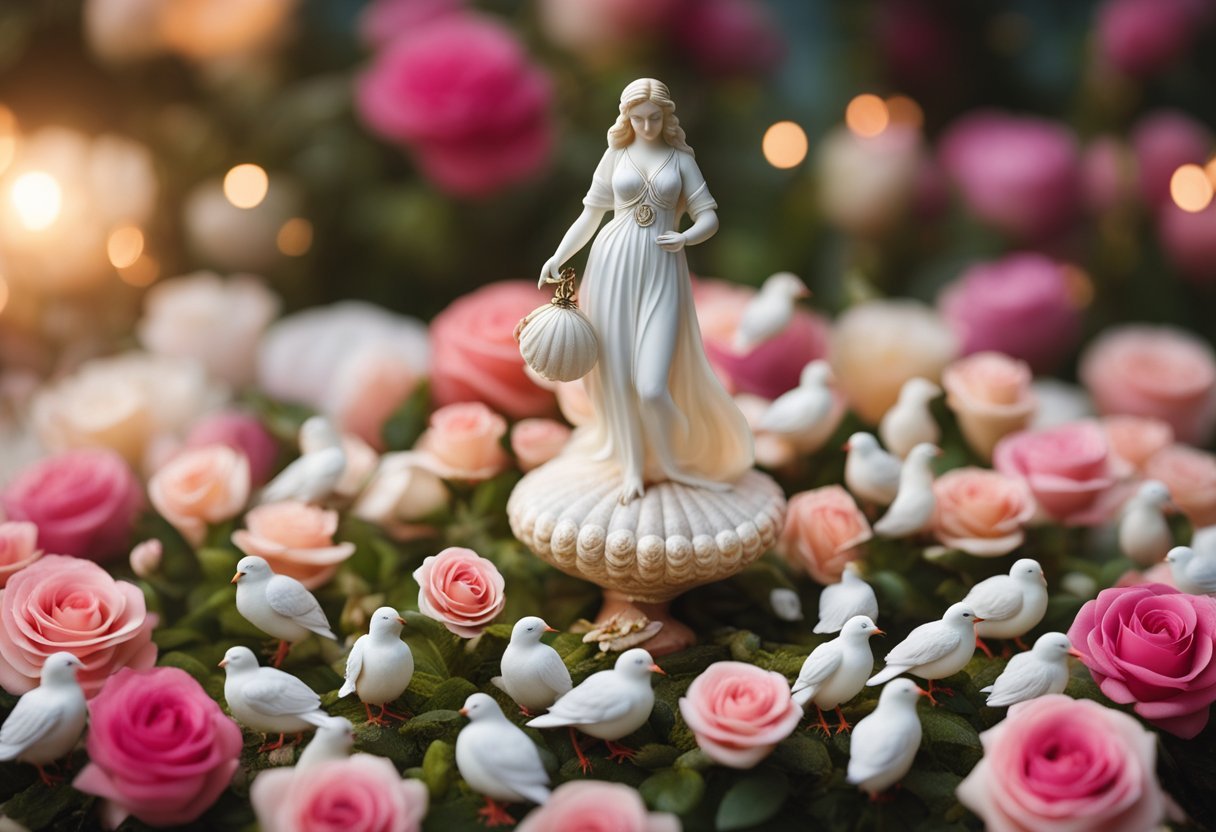Imagine a divine figure who captivates both the ancient and the modern world with her allure and grace. Venus, the Roman goddess of love, beauty, desire, and fertility, is a symbol of eternal charm and passion. Often identified with the Greek goddess Aphrodite, Venus’s influence reaches far beyond mythology, weaving into the cultural and historical fabric of Rome.
The mother of Aeneas and, by extension, the ancestral figure of the Roman people, Venus was revered for her role in their legendary beginnings. Festivals and rituals were dedicated to her, signifying her paramount importance in Roman religion and society. Her legacy persists through art, literature, and the continued fascination with her mythos.
Dive into the enchanting world of Venus, where love and beauty reign supreme. From the story of her birth from sea foam to her myriad lovers and offspring, Venus’s myths are as captivating today as they were millennia ago.
Mythological Origins

Venus, the Roman goddess of love, beauty, and fertility, finds her roots deeply embedded in both Greek and Roman mythology. Her origins tell a story of dramatic events and played a foundational role in Roman culture and history.
Birth of Venus
According to Roman mythology, Venus was famously born from sea foam. This dramatic and iconic birth occurred after the Titan Cronus castrated his father Uranus and threw his genitals into the sea. From the resulting sea foam, Venus emerged fully grown. This imagery, celebrated in various artworks, symbolizes her association with life, beauty, and fertility.
Her Greek counterpart, Aphrodite, shares this origin story. Both goddesses are often depicted rising from the sea, highlighting their powerful connection to the natural and divine worlds. This myth of Venus’s birth emphasizes her role as a bringer of beauty and desire from the chaotic forces of nature.
Venus in Roman Mythology
In Roman mythology, Venus’s story expands beyond her birth. She was revered as the ancestress of the Roman people through her mortal son, Aeneas, a hero of Troy who fled to Italy. Aeneas’s descendants, Romulus and Remus, founded Rome, linking Venus directly to the city’s origins.
Venus’s influence extended beyond myth into daily life and religious practices. She was central to many festivals and worshiped in various temples across Rome. Her roles were diverse, encompassing love, prosperity, and victory, which made her an essential deity in Roman culture.
The Romans claimed significant leaders, like Julius Caesar, as her descendants, further solidifying her status and importance. Thus, Venus was more than just a goddess; she was an integral part of Rome’s identity and heritage.
Cultural Impact

Venus, the Roman goddess of love, beauty, and fertility, has significantly influenced various aspects of culture. Her presence is evident in art, literature, and modern symbolism, demonstrating her lasting legacy.
Venus in Art
From classical sculptures to Renaissance masterpieces, Venus has been a prominent figure in art. Ancient statues like the “Venus de Milo” showcase her beauty and grace. During the Renaissance, artists like Botticelli highlighted her significance in works such as “The Birth of Venus,” where she is depicted emerging from the sea.
Venus’s image was a favorite subject for painters, symbolizing ideal beauty. In the era of neo-classicism, her portrayal continued to inspire with its graceful and serene demeanor.
Literary References
Venus often appeared in ancient Roman literature, symbolizing love and beauty. In Virgil’s “Aeneid,” Venus is a caring mother who aids her son Aeneas in his journey. Ovid’s “Metamorphoses” also features her in tales of love and transformation, showing her deeper impacts on human emotions and relationships.
During the Middle Ages and Renaissance, poets like Dante and Shakespeare referenced Venus in their works. She came to represent various dimensions of love, from the carnal to the divine.
Modern Symbolism
In contemporary culture, Venus symbolizes romantic love and beauty. She has become a popular figure in fashion and advertising. The Venus symbol (♀) is used to represent femininity and is frequently seen in discussions about gender and identity.
Venus’s legacy extends to modern astrology, where she rules over aspects of love and aesthetics. Films, novels, and brands often invoke her name and image to evoke themes of allure and attraction, demonstrating her enduring presence in society.

